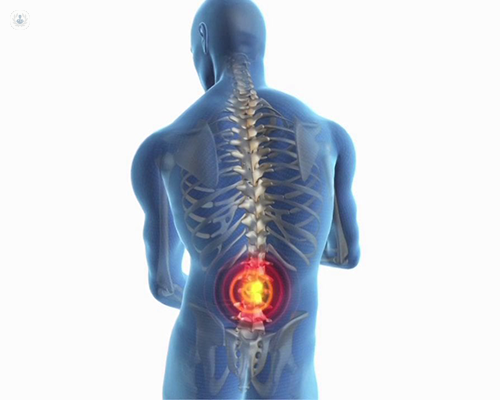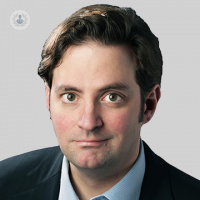Spinal stenosis: what is it, and what causes flare ups?
Autore:Top Doctors recently spoke to highly skilled and experienced Ipswich-based consultant spinal surgeon, Mr Robert Lovell, to discuss what conditions may lead to spinal stenosis, and what the most common causes of spinal stenosis flare ups are.

Which conditions may cause spinal stenosis?
Spinal stenosis is a common feature of the spine going through the ageing process. It is not usually caused by any specific condition. More often than not, it is not something anyone has caused or could have avoided.
As the spine ages, joints become worn and overgrow (a bit like knobbly finger joints). This can narrow the space available for the nerves. This is called stenosis.
What is a common issue for patients with spinal stenosis?
Patients will often complain of pain, numbness, or pins and needles in the legs. They may complain that the legs feel dead or heavy when walking or standing, and they will find that they need to sit or bend forward frequently. Stenosis may also occur in the neck, leading to similar problems affecting the arms and hands.
What causes spinal stenosis to flare up?
Flare ups may be caused by muscle spasms, which can be caused by bending or twisting suddenly. They may be caused by an additional problem such as a slipped disc. Some patients may just reach a tipping point where their stenosis becomes symptomatic without any identifiable cause or event.
What are the treatment options available?
In the first instance, simple over-the-counter painkillers may be all that is required. Advice from a GP or pharmacist is very useful. If symptoms fail to settle, a physiotherapist or osteopath will often be able to help with strengthening and postural exercises. They will be able to work into any tight or knotty muscle and help with pain.
If things don’t settle, a scan may be required to see exactly what is going on. Options from that point may include targeted physical treatment or intervention. Often, injections are all that are required to calm things down. These are usually undertaken in theatre under sedation as a day-case procedure. Sometimes, however, a discussion regarding the pros and cons of surgery is called for.
Can exercise or physical therapy help?
Yes. Almost always there is a benefit in seeing a physio or osteopath.
Does spinal stenosis require fusion?
No. Whilst some patients do come to surgical treatment, the majority of these do not need fusion. Most of the time, surgery involves cutting away the overgrown joint or thick ligament to relieve pressure on the nerves. There are some cases where fusion is required, but only in specific circumstances such as where one of the bones has moved forward on top of the one below (spondylolisthesis).
To book a consultation with Mr Robert Lovell, simply head on over and visit his Top Doctors profile today.



